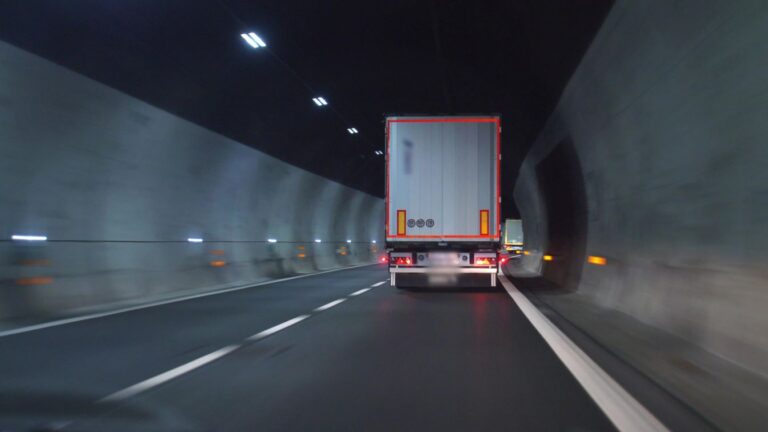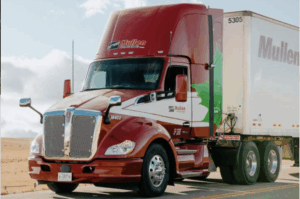There are too many trucks competing for too little freight in the North American market, driving rates down. This is not news to most carriers and owner-operators, who are struggling to stay afloat until the market rebalances.
But when will that be?
According to statements by analysts at FTR Intel during a May 9 webinar titled “Key Issues in Transportation,” not soon enough.
It’s not all bad news, though: FTR’s forecast shows slow improvement though the rest of 2024 and into 2025.
Improvement will be gradual.
Avery Vise, FTR’s vice president of trucking, addressed capacity in trucking using FTR’s “Active Truck Utilization” metric, which shows the approximate share of all seated Class 8 trucks actively engaged in hauling freight.
“It’s a key metric in our forecasting of freight rates,” Vise said. “We were essentially at 100% utilization in 2021. The market did settle quite substantially over the course of 2022, bottoming out at around 88%. The 10-year average is 92%.”
A key point is that freight rates generally begin to rise when the utilization metric reaches around 94%. At of the end of April 2024, utilization stood at about 90%. There are still too many trucks competing for available freight — and while FTR expects utilization to continue rising, they warn that it will be a slow, gradual process.
“We generally see rates steadily rising and turning to positive year over year by the third quarter. The forecast for this year is that spot rates overall will be up about a percent,” Vise said. “Rates for dry van and refrigerated will be up a little bit stronger than that.”
While current freight rates are high when compared to those of 2018, increases in the cost of fuel, equipment and other aspects have significantly raised operating costs for trucking companies.
Rate and capacity forecasts depend on current economic conditions.
These topics were addressed by Eric Starks, FTR’s chairman of the board. Starks has monitored the economic highs and lows of the freight industry for decades.
“The economy right now has been doing okay,” he said, adding, “But it feels so different for everybody.”
If this statement seems confusing, it’s because the economic indicators that forecasters depend on haven’t acted as expected for the past year or so. For example, Starks pointed out, there differences between the markets for goods and services. Consumer spending on goods has remained fairly flat, while spending on services has steadily risen.
In other words, consumer spending is rising, but on services rather than goods — and services aren’t something that can be hauled on a truck. For example, it takes trucks to deliver the newest smartphone model to retailers. Providing the service of supplying voice and data plans to customers, on the other hand, doesn’t involve trucking (except for movement of cell tower parts, cables and other supplies).
“Manufacturing in and of itself is the lifeblood of transportation,” Starks explained. “(The year) 2018 was, in fact, higher than what we saw as we moved into 2022 and 2023. Since then, we have been fairly flat.”
Unfortunately, Starks does not anticipate much growth regarding transportation’s contributions to the U.S. Gross Domestic Product (GDP), which measures the monetary value of goods and services.
“As we look out over the next year and a half, you’re in between 1% and 1.5% quarter over quarter growth,” he said. “That’s not awesome by any stretch of the imagination. If this continues in this fashion, then I think you don’t have huge amount of upside on the transportation side of the equation.”
For rates to rise, the number of available trucks must drop.
If there are too many trucks to haul the available freight — and the amount of freight is not expected to grow substantially, according to FTR analysts — then the number of available trucks must come down in order for rates to rise. FTR Senior Analyst for Commercial Vehicles Dan Moyer addressed this area.
“One thing important to note is orders trending down, really since the third quarter of last year,” explained Dan Moyer, FTR’s senior analyst for commercial vehicles.
The problem here is the backlog of orders for Class 8 trucks on the North American market that are yet to be filled.
“While orders (for new trucks) have been trending down again, their build levels have been averaging between 25 and 30,000 units a month,” he said. “Now as a result backlogs have been coming down albeit they still remain at good levels.”
Moyer also noted that retail sales have been declining.
“As a result, not only have backlogs been coming down, but inventories have been going up quite noticeably,” he said.
Class 8 truck inventories include unsold trucks on dealer lots, trucks waiting to be shipped from the manufacturer, and even trucks purchased by the secondary market for installation of vocational bodies such as dump, tank, concrete and trash compactor that have not been sold to users.
As truck inventories increase and build backlogs diminish, at some point the industry will slow production.
“This will definitely exert downward pressure on build rates in the second half of the year,” Moyer said. “We expect that to last through potentially the first half of next year as well before we see a market upturn.”
The looming 2027 deadline for compliance with the U.S. Environmental Protection Agency’s NOx emissions reduction requirements, as well as greenhouse gas reduction, is another factor to consider.
“The EPA chose to adopt the single mandate in model year 2027 rather than phasing it in over a number of different model years,” Moyer said. “Not only have they mandated a wider range of testing conditions, but they’ve also implemented longer regulatory useful life and emissions-related warranty periods.”
The cost of additional emissions technology and longer warranty periods are expected to add an estimated $30,000 to the price of 2027-model trucks. In the near term, however, carriers may elect to purchase additional 2025 and 2026 models, both to avoid the price increase and to dodge potential maintenance issues with the new technology.
The resulting backlog of new pre-2027 truck models offers little hope for a reduction in truck capacity in the market.
The rail freight industry can have a direct impact on trucking.
According to Joseph Towers, FTR’s senior analyst for rail, one railroad issue that could have a substantial impact on trucking is a potential strike by rail workers at the Canadian National (CN) and Canadian Pacific Kansas City (CPKC) railroads.
If issues are not settled by the May 22 strike authorization date, the stoppage would impact shipments of potash, grain, wood products, coal and other commodities across North America. Some imports may be rerouted from Canadian ports to U.S. ports on the West Coast that have access to U.S. railroads. Shipment of any products could be shifted from rail to trucking to keep products moving.
Cliff Abbott is an experienced commercial vehicle driver and owner-operator who still holds a CDL in his home state of Alabama. In nearly 40 years in trucking, he’s been an instructor and trainer and has managed safety and recruiting operations for several carriers. Having never lost his love of the road, Cliff has written a book and hundreds of songs and has been writing for The Trucker for more than a decade.









Hi Cliff
Then the phones story that the ATA and the mega carriers are pushing that there are not enough CDL truck drivers available is nothing more than a big pile of crap.
America needs experienced truck drivers on the road who are responsible and know the rules of the road.
Every OTR driver should have 2 or 3 years minimum experience.
New CDL drivers should get their experience driving tractor trailer in city conditions at controlled speeds learning how to seriously deal with road conditions safely.
If there are too many trucks on the road then cut it back so those drivers can get a better rate of pay. My last employer paid me by the hour. My driving was visible to him through a program I advised him of Live 360. It shows where I was anywhere. It showed the speed I was driving at that moment. It shows when the truck stops and moves. It is an incredible option for the EDL.
I am 70 years old and am looking forward to being back on the highways, but it also has to pay so the owner of the truck also makes money.